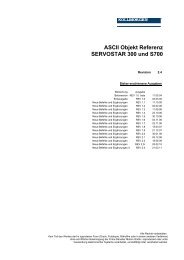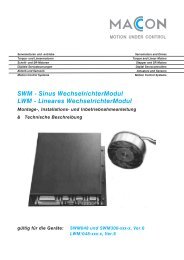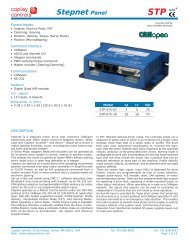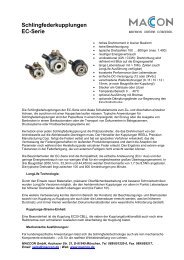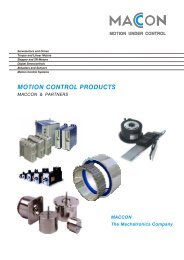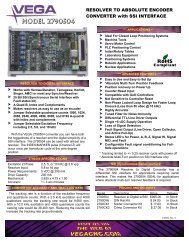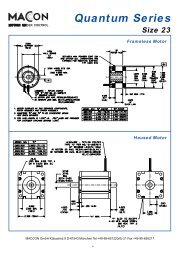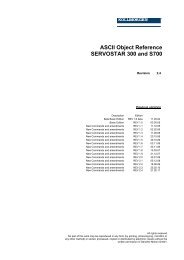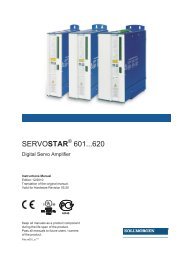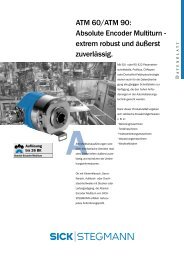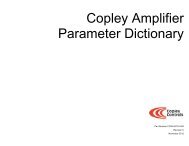CANopen Programmer's Manual - Maccon.de
CANopen Programmer's Manual - Maccon.de
CANopen Programmer's Manual - Maccon.de
Create successful ePaper yourself
Turn your PDF publications into a flip-book with our unique Google optimized e-Paper software.
<strong>CANopen</strong> Programmer’s <strong>Manual</strong> 3: Device Control, Configuration, and Status<br />
INPUT PIN CONFIG REGISTER (16 BIT) INDEX 0X2191<br />
Type Access Units Range Map PDO Memory<br />
Unsigned 16 RW - See Description, below YES RF<br />
Description<br />
Some amplifiers have one or more pull-up resistors associated with their general-purpose input<br />
pins. On these amplifiers, the state of the pull-ups can be controlled by writing to this register.<br />
This register has one bit for each pull-up resistor available on the amplifier. Setting the bit causes<br />
the resistor to pull any inputs connected to it up to the high state when they are not connected.<br />
Bits 0 – 7 of this register are used to control pull-up resistor states. Each bit represents an input<br />
number. Bit 0 = IN1, bit 1 = IN2, etc.<br />
On amplifiers that allow groups of inputs to be configured as either single en<strong>de</strong>d or differential, bit<br />
8 controls this feature. Set bit 8 to 0 for single en<strong>de</strong>d, 1 for differential.<br />
INPUT PIN CONFIG REGISTER (32 BIT) INDEX 0X219C<br />
Type Access Units Range Map PDO Memory<br />
Unsigned 32 RW - See Description, below YES RF<br />
Description<br />
Some amplifiers have one or more pull-up resistors associated with their general-purpose input<br />
pins. On these amplifiers, the state of the pull-ups can be controlled by writing to this register.<br />
This register has one bit for each pull-up resistor available on the amplifier. Setting the bit causes<br />
the resistor to pull any inputs connected to it up to the high state when they are not connected.<br />
Bits 0 – 7 of this register are used to control pull-up resistor states. Each bit represents an input<br />
number. Bit 0 = IN1, bit 1 = IN2, etc.<br />
On amplifiers that allow groups of inputs to be configured as either single en<strong>de</strong>d or differential, bit<br />
8 controls this feature. Set bit 8 to 0 for single en<strong>de</strong>d, 1 for differential.<br />
Copley Controls 117




